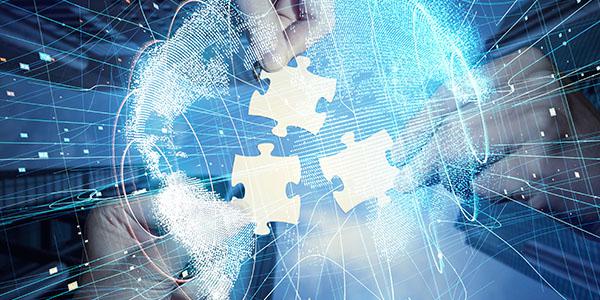Building a Unified Threat Picture in the Post-COVID-19 World
(Third of a three-part series)
The United States must amass a global intelligence capability built around an all-of-nation approach to threat detection and action, says a national security analyst. This includes increasing human intelligence, but it also would entail the intelligence community utilizing the tools it has and then developing a better “brothernet” further out in terms of forecasting.
One part of that would be to increase global sensing capabilities, which would allow the country to become more future-smart. Another part would be to wield the resources and authority to recognize and act on crises such as pandemics, which have been occurring since the Spanish Flu of 1918-19. But the core element of this issue is to push forward with overlapping innovations in several key technology areas.
Dr. James Canton, CEO and chairman, The Institute for Global Futures, says intelligence technical capabilities must be based on five key technologies that he describes as exponential. The community should both understand them and drive the outcomes of their development, as well as integrate them into a new intelligence infrastructure. He adds that an entire intelligence business process transformation must occur for acquiring, analyzing, predicting and acting on these technologies by working with the private sector.
“There are new threat factors, and we need to have capabilities that are better at prediction, better at big data, better at being faster and agile.”
These five technologies are nanotechnology, the manipulation of matter at the atomic level; biotechnology, both medicine-driven and protective and counter-biological weaponization; information technology, including information warfare, disinformation reality engineering, robotics and artificial intelligence (AI), neurotechnology; and quantum technologies. Canton emphasizes the importance of AI in this new intelligence world. “AI, married to analytics and big data and geointelligence in the emerging world of 5G, is probably the most important of all of these,” he says.
Adversaries already have created superior quantum communications using satellites and new platforms. Quantum computing and communications involves an entirely different architecture that will affect problem solving, risk modeling and scenario generation—and this will happen in these early stages, he offers.
“The ability of the intelligence community to understand—and shape the future of—nano-, bio-, neuro-, quantum and information technologies will shape the future [of intelligence] for the next 100 to 200 years,” he states.
And this enters the realm of cyber. “You can’t have any of these conversations about this particular part of these exponential technologies without discussing how we need to completely transform cyber,” he emphasizes. “Cyber is the attack vector that renders our information validity inoperable. We can’t afford that.”
The unified intelligence field includes more agile deployment of diagnostics, containment and use of big data, predictive analytics, AI and geointelligence. Canton expresses that U.S. geointelligence was not applied to the pandemic outbreak as well as it could have been.
He offers that intelligence capabilities must focus on weak signals, which tend to move faster than bureaucracies. The intelligence community needs a much more agile global sensing capability that can operate in real time. It must have persistent surveillance and analysis capabilities.
“That would mean the evidence-based intelligence of an emerging threat is so overwhelming that it cannot be denied with any veracity by any part of government,” he says.
“The ability of the intelligence community to have a new intelligence sensing infrastructure that is agile and mobile and real-time and can be verifiable … we just reached a point where that capability needs to be re-looked at,” Canton states. “It can only be borne on having better analytics, better sensing capabilities and better and faster recognition.”
Identifying these weak signals that could indicate a greater pandemic threat will require the breaking down of communication silos among members of the intelligence community, he declares. A deeper, faster responding intelligence global infrastructure will be necessary to provide the requisite recognition, authority and evidence.
This goes hand in hand with a better predictive analytics capability, Canton says. “This requires better strategic forecasting—around impossible things to imagine, not just the possible,” he emphasizes. “What are the possibilities of other events that could shut down an entire nation, that would be similar to a biological agent but was not a biological agent?”
A new non-kinetic, multidomain universe will exist in virtual, land, air, sea and space domains. “You need to look at this larger multidomain environment and consider the known, the unknown, the possible and the impossible,” Canton declares. “You can’t anticipate the impossible—but you can try.”





Comments